Kanazawa is a time capsule from Japan's "golden age" during the Tokugawa Period. The city combines a stunning natural location with a thriving cultural legacy, with Kanazawa Castle and the surrounding gardens serving as portals to this era. Appreciate the history, nature, and the reasons this castle is so beloved.
Table of Contents
- History Behind the Castle
- Modern Day Reconstruction of Kanazawa Castle
- Main Features of the Kanazawa Castle
- What’s around Kanazawa Castle?
- Location and Admission
- Conclusion
History Behind the Castle
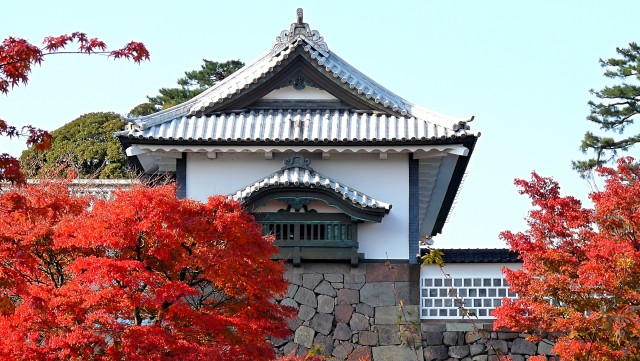
Kanazawa Castle was initially built in 1593 by Maeda Toshiie and is the central location of Kanazawa's historical and cultural heritage. It sheltered fourteen generations of the Maeda family. Unfortunately, the castle buildings were lost in recurrent fires and feudal wars; only a few original structures survived, but it has been preserved since 1866 as an important historic site of Ishikawa Prefecture.
Long ago, an autonomous Buddhist kingdom occupied the grounds of Kanazawa Castle before the castle even came to be. However, Oda Nobunaga, the famed feudal warlord who would later become known as one of the three Great Unifiers of Japan, set his eye on this kingdom and the entire area was conquered by one of Nobunaga’s men, Sakuma Morimasa. Nobunaga rewarded Morimasa with the land.
After the war, Morimasa is credited to have started the Kanazawa Castle, but before he could proceed, Nobunaga was assassinated. After the assassination, Morimasa was on the losing side when one of Nobunaga’s men Toyotomi Hideyoshi took over. After the conquest, Hideyoshi awarded the region to his general, Maeda Toshiie.
Maeda Toshiie began the full-fledged construction of Kanazawa Castle. The fortress sheltered the Maeda clan for three centuries until the Meiji Restoration in 1868, and the surrounding areas were known to be flourishing in trade and the arts.
However, recurrent fires and natural disasters between 1600 and the late 1800s destroyed the original castle, with the most destructive being in 1881. As a result, only a few original structures survived, including the Ishikawa-mon (Ishikawa Gate), Sanjikken Yagura, and the Tsurumaru Storehouse, all of which you can see today. They are now Important Cultural Properties and the castle has been designated a National Historic Site since 2008.
Fun Fact: Kanazawa Castle doesn’t have a 天守閣 (tenshukaku - main castle tower) unlike many of Japan’s castles because it burned down and was never restored. But the castle is still very impressive and very much worth visiting.
Writer's Pick
Modern Day Reconstruction of Kanazawa Castle

In 2001, Sumitomo Corporation, one of the big companies in Japan, was relegated to the reconstruction project of Kanazawa Castle. They restored the castle's turrets (Hishi Yagura and Tsuzuki Yagura) and a storehouse (Gojikken Nagaya), as well as the stone walls.
Later reconstruction projects restored the main gate and two other entrances in 2010. The most recent restoration work completed in 2020 fully restored the wooden Nezumitamon Gate and Nezumitamon Bridge.
All of the reconstruction and restoration efforts required consulting experts in the original building layout and methods to get the closest to the castle’s original form as possible while utilizing the latest technology in the building process as well.
Main Features of the Kanazawa Castle
Of course, the best things to see are the original structures from the castle as well as the carefully restored parts as mentioned above. Let’s delve into some more details about each.
Three Main Gates of Kanazawa Castle
The Ninomaru or where the main palace used to be located (again, the main castle tower no longer exists because it was burned down and never restored) can be accessed through the three main gates of Kanazawa Castle, the Ishikawa Gate, Kahoku Gate, and Hashizume Gate.
Ishikawa Gate (石川門 Ishikawa-mon)
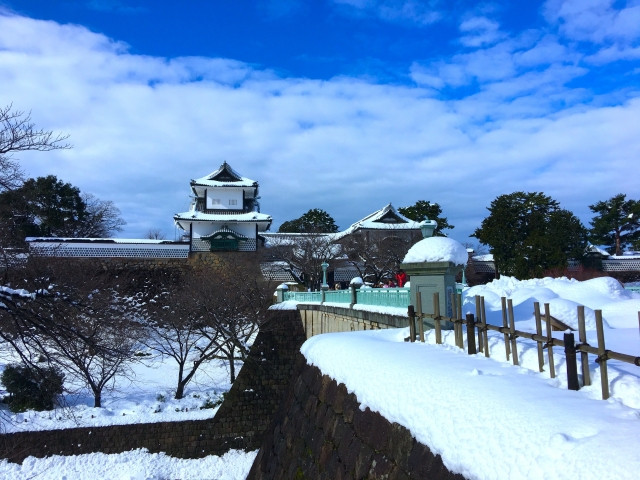
Ishikawa Gate is the only one of the three main gates that didn’t have to be restored recently. It was reconstructed in 1788 after a major fire destroyed the main gates, and has been left mainly untouched since, meaning it’s over 200 years old. There’s two parts to the gate, the first entrance called 一の門 (Ichinomon) and the exit of the gate called 二の門 (Ninomon) which leads into the main inner castle grounds. You can actually go inside the watchtower (yagura) of Ishikawa Gate if you wish.
You cross over Ishikawa Bridge to get to Ishikawa Gate. It also is the closest gate to Kenrokuen (discussed later in the article), so it may be the best way to use if you’re coming from or going to the famous garden.
Kahoku Gate (河北門 Kahoku-mon)
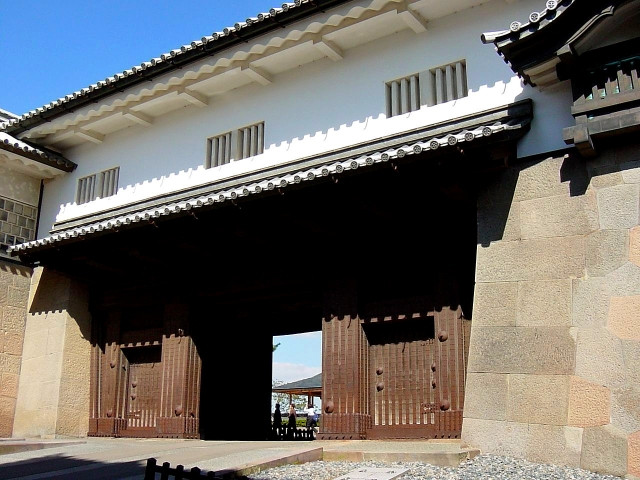
Kahoku Gate actually used to be the main entrance of Kanazawa Castle. If you’re walking to Kanazawa Castle from Kanazawa Castle and decide to enter from the northern end of the park, you may find yourself at this particular gate. It has a similar structure to Ishikawa Gate with its 一の門 and 二の門. Like Ishikawa Gate, you can access the second floor of the gate’s watchtower for free. Kahoku Gate was fully restored in 2010.
Hashizume Gate (橋爪門 Hashizume-mon)

Hashizume Gate is the most recently restored gate of the three, only having finished its reconstruction in 2015. You can enter through this gate if you come from the south or western part of the castle grounds. The incredible detailing is worth taking a closer look at. This gate again is structured like that of the two above, being the biggest in total area. It also has the biggest watchtower (yagura), which will be further discussed below.
Stone Walls of Kanazawa Castle

As we mentioned above, the stone walls of Kanazawa Castle had to be restored as well. These were very important to replace, as it threatened the foundation of the castle itself. The construction was carried out by Sumitomo Mitsui Construction, and it required nearly 4,000 stones. The method of building these stone walls, passed down only to and by the Goto family, was used, with two main techniques called Uchikomi-hagi and Kirikomi-hagi.
※Kanazawa Castle Park, “Stone walls at Kanazawa Castle Park” ※Sumitomo Mitsui Construction Co., “Restoration of the Kanazawa Castle Stone Walls”
The Turrets (Watchtowers) and Storehouse of Kanazawa Castle
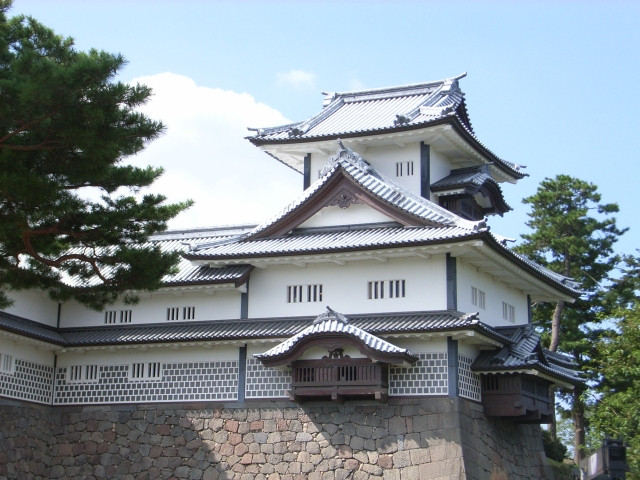
We mentioned the watchtowers when talking about the gates, but there are two main ones to definitely visit when you visit the castle, plus the building that connects the two. All 3 were restored in 2001 after being destroyed in a fire in 1881.
The first is Hishi Yagura (also known as the diamond turret). This turret is 3 stories tall and you can overlook the rest of the castle grounds from the windows as the samurai who were posted here would. You will find many diamonds in the construction of the building, including the posts.
The second is Hashizume-mon Tsuzuki Yagura. It can be found, as expected, next to Hashizume Gate. As such, it would be used as a lookout to make sure that that gate was protected and who was going in and out of the gate.
The long building connecting Hishi Yagura and Hashizume Yagura is called Gojukken Nagaya. It was the two-storied storehouse of the castle. Not only can you find artifacts displayed inside this building, but you can observe the incredible architecture replicated from the original style with complexly intertwined beams and posts using very little nails or metal bolts.
This connected complex with the Gojukken Nagaya and the two watchtowers costs money to enter, whereas everything mentioned prior to this does not.
Other Structures to Keep an Eye Out For

While we won’t cover them in depth, there are many other structures on the castle grounds to take a look at including
-
other yagura watchtowers including Sanjikken Yagura and storehouses
-
the newly reconstructed Nezumitamon Gate and Bridge
-
the moats, especially Imori Moat which was restored after being filled in during the Meiji Period
For castle enthusiasts, it’s said that this castle is worth visiting multiple times to get the full experience, especially in different seasons and different times of day.
What’s around Kanazawa Castle?
Kanazawa Castle is much more than just the castle itself. What else can you look forward to here?
Kanazawa Castle Park
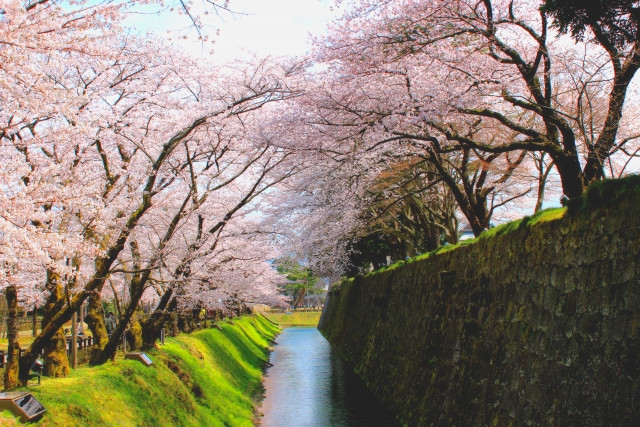
Kanazawa Castle is located within a larger Kanazawa Castle Park. It features lots of nature, both greenery and wildlife. In fact, the official website has entire sections dedicated to the plants and
animals that can be found in the park.
Arguably, one of the most popular draws of the castle park is when the cherry blossoms bloom in the spring. You can find the beautiful pale pink flowers both inside the castle grounds, and outside the main gates, especially near Ishikawa Gate. They also have light-up events at night, so you can get other-worldly photos of the sakura against the night sky and white castle.
Gyokuseninmaru Garden

Gyokuseninmaru Garden is found within Kanazawa Castle Park, reconstructed in 2015. Visitors can enjoy tea and tea ceremonies at the Gyokusenan Rest House, as well as a stroll around the garden. People particularly like the large pond with three islets in the middle, as the reflections and overall architecture is aesthetically pleasing and traditional. And on certain nights, the garden is lit up for visitors to enjoy. Check the official website for the hours open during particular seasons and days.
Admission: Free
※ Gyokusen’inmaru Garden
Kenrokuen

And last but not least, we can’t talk about Kanazawa Castle without talking about Kenrokuen, the former imperial garden. The name means a combination of the “six attributes of a perfect garden”. And perfect it is, as Kenrokuen is considered one of the 3 most beautiful gardens in all of Japan. What started as a luxury for the lords that lived in the castle became a public national treasure. And of course the seasons including cherry blossoms can be enjoyed here as well.
Admission: 320 yen (Adult), 100 yen (Children aged 6 and above)
※Kenrokuen
Location and Admission
Kanazawa Castle is a 20-25 minute walk on foot from Kanazawa Station.
You could take a variety of buses, including the Kanazawa Loop Bus, from Kanazawa Station. The Kanazawa Loop bus will take you to the entrance of Kenrokuen and Ishikawa Gate, whereas the other buses may drop you off at different corners of the park.
Admission Hours
Kanazawa Castle Park
March 1 to October 15: 7 am to 6 pm
October 16 to the last day of February: 8 am to 5 pm
Hishi Yagura, Hashizume Yagura and Gojukken Nagaya
9 am to 4:30 pm with last entry at 4 pm
Tickets
Kanazawa Castle is mostly free, except to enter Hishi Yagura, Hashizume Yagura and Gojukken Nagaya. That costs 320 yen for adults ages 18 and above.
If you know you’ll be visiting Kenrokuen as well, you could get a combined ticket for a total of 500 yen.
Conclusion
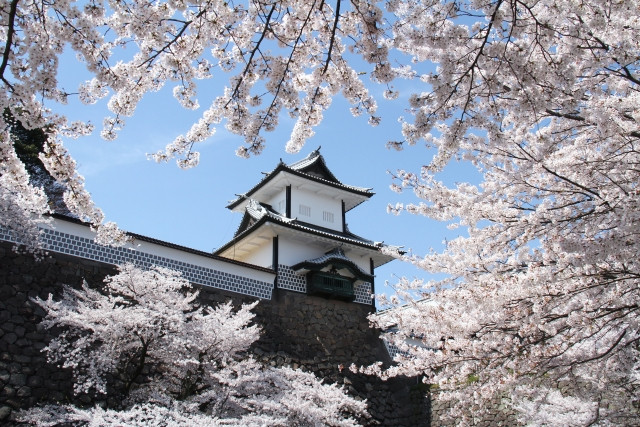
The Kanazawa Castle and Kanazawa Castle Park are one of the greatest marvels of not only Kanazawa Prefecture but of all of Japan, and visitors should not miss out. Moreover, it is a great place to visit for nature-lovers, as the park has an abundance of greenery, gardens and wildlife. The captivating view of the historical buildings, whether standing the test of time or meticulously recreated, will be an experience to be remembered.



















.jpg)











